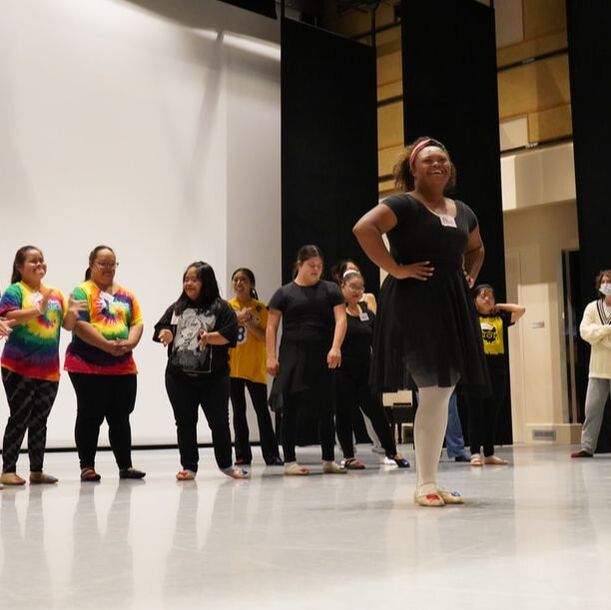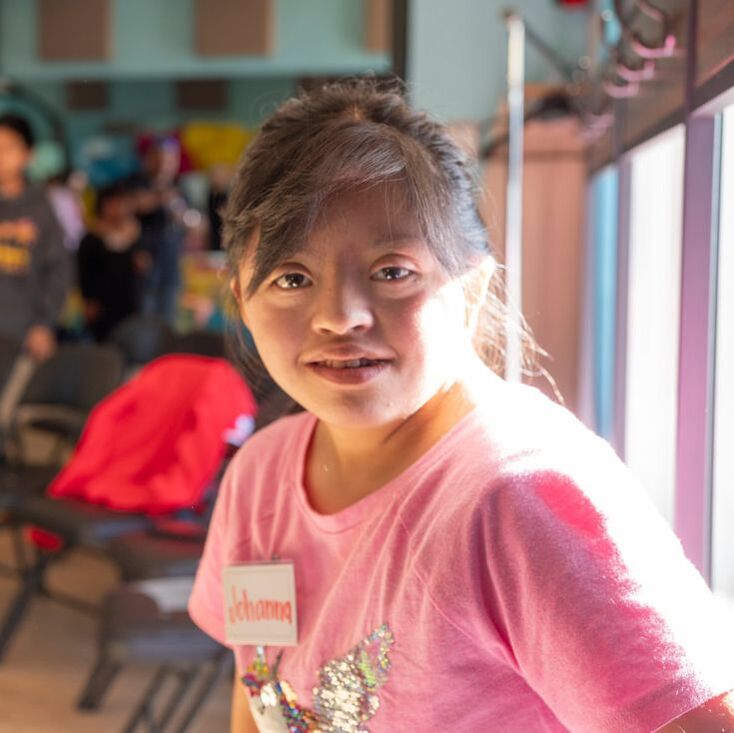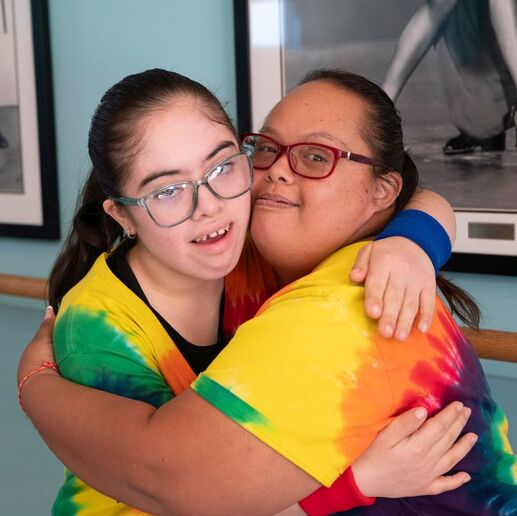|
“My daughter loves being part of Free 2 Be Me Dance!!! …Her motor skills and coordination have grown so much and it shows in all that she does. The teachers and volunteers are so awesome and having other parents that deal with the same daily situations with children of all different ages is great. So while enjoying our children dancing, as parents we can also share stories and invaluable information with each other...” – DINA HAMILTON |
Our Program
Our goal is to not only teach dance, but to also empower dancers through movement and meaningful friendships.
Dance offers everyone the chance to develop social, emotional, cognitive and physical skills at any age, including:
|
- Following directions
- Music appreciation - Creativity through movement - Improving focus for long periods of time |
~ Separating upper and lower body movements
~ Coordinating movements to stop and start on cue ~ Improved balance, coordination, posture and alignment ~ Increased pride in their accomplishments. (Courtesy of Boston Ballet's Adaptive Dance Program) |
...oh, and it's FUN!
Class Structure
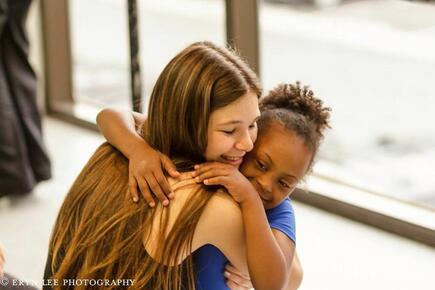
The Welcome!
Each child is greeted by name with enthusiasm so they know that they are special and that they are welcome. This establishes good feelings, warmth, and emotional safety for the dancer, and is designed to make their transition to group work easier.
We begin the class with dancers, teachers and volunteers all sitting or standing in a circle. This shape makes everyone feel equal, no one is before or after anyone else. We clap and sing a song called “Who is in the circle today?” where everyone has the chance to say their name out loud and be recognized while establishing their place in the group. This promotes feelings of belonging and friendship.
Each child is greeted by name with enthusiasm so they know that they are special and that they are welcome. This establishes good feelings, warmth, and emotional safety for the dancer, and is designed to make their transition to group work easier.
We begin the class with dancers, teachers and volunteers all sitting or standing in a circle. This shape makes everyone feel equal, no one is before or after anyone else. We clap and sing a song called “Who is in the circle today?” where everyone has the chance to say their name out loud and be recognized while establishing their place in the group. This promotes feelings of belonging and friendship.
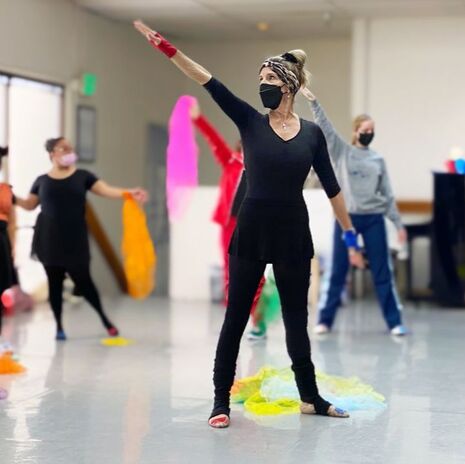
BrainDance!
A body/brain-centering tool for brain reorganization, oxygenation, and recuperation
Developed by Anne Green Gilbert, the BrainDance is a series of exercises comprised of eight developmental movement patterns that healthy human beings naturally move through in the first year of life. Cycling through these patterns at any age, daily or weekly while sitting or standing has been found to be beneficial in reorganizing our central nervous system. Repeating these patterns over time may help us fill in any missing gaps in our neurological system due to birth trauma, illness, environment, head injury or not enough floor time as a baby.
A body/brain-centering tool for brain reorganization, oxygenation, and recuperation
Developed by Anne Green Gilbert, the BrainDance is a series of exercises comprised of eight developmental movement patterns that healthy human beings naturally move through in the first year of life. Cycling through these patterns at any age, daily or weekly while sitting or standing has been found to be beneficial in reorganizing our central nervous system. Repeating these patterns over time may help us fill in any missing gaps in our neurological system due to birth trauma, illness, environment, head injury or not enough floor time as a baby.
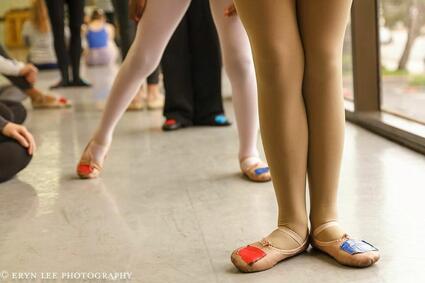
Barre Work
The dancers take their place at the ballet barre using visual cues to increase understanding of "where" to stand in order to reduce anxiety and distraction. The teacher makes sure she has the students' attention on her (increasing mental attention) before asking for volunteers to demonstrate the movements that were learned the previous week (increasing memory recall). The teacher then does the movements with the dancers so that they have visual and auditory cues while performing each movement, all the while being supported physically by their "special friend" to be sure the proper technique is acquired and reinforced. This portion of the class requires maximum amount of self discipline.
The dancers take their place at the ballet barre using visual cues to increase understanding of "where" to stand in order to reduce anxiety and distraction. The teacher makes sure she has the students' attention on her (increasing mental attention) before asking for volunteers to demonstrate the movements that were learned the previous week (increasing memory recall). The teacher then does the movements with the dancers so that they have visual and auditory cues while performing each movement, all the while being supported physically by their "special friend" to be sure the proper technique is acquired and reinforced. This portion of the class requires maximum amount of self discipline.
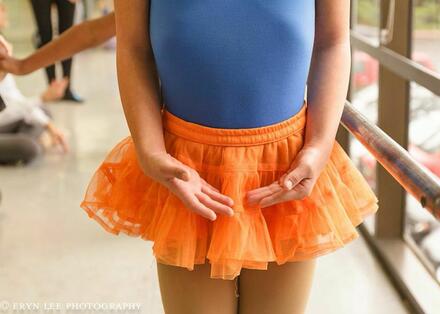
Center Work
This is a chance for the dancers to release some of their energy and improve coordination. Some examples of center floor work are sashays, bourrées, piques, jumps, port-de-bras, turns.
This is a chance for the dancers to release some of their energy and improve coordination. Some examples of center floor work are sashays, bourrées, piques, jumps, port-de-bras, turns.
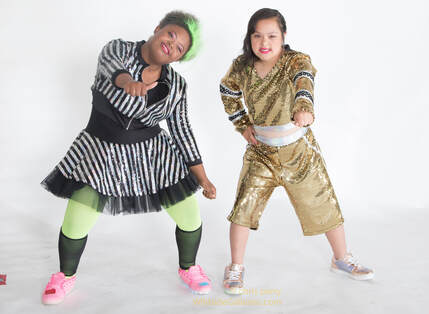
Choreography
After technical exercises, dancers work on ballet and hip hop choreographies that they perform throughout the year. Choreography builds on listening skills, spacial awareness, and following verbal and non-verbal cues.
After technical exercises, dancers work on ballet and hip hop choreographies that they perform throughout the year. Choreography builds on listening skills, spacial awareness, and following verbal and non-verbal cues.
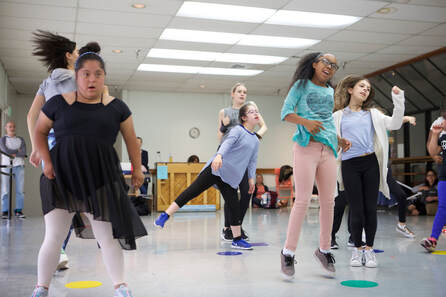
Free Dance
Free Dance is a very important part of each class where the dancers each take a turn “solo” dancing in front of their peers. This promotes self-expression and self-confidence, as well as builds on improvisation skills and creating new neural pathways in the brain.
Free Dance is a very important part of each class where the dancers each take a turn “solo” dancing in front of their peers. This promotes self-expression and self-confidence, as well as builds on improvisation skills and creating new neural pathways in the brain.
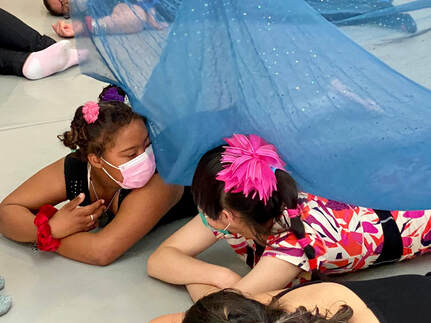
Cool Down
To prepare dancers for the end of class, we provide a tactile sensory calming experience where each dancer lies on the ground and visualizes their favorite part of the class. Teachers then provide individual feedback to dancers highlighting their accomplishments of the day. Visualization helps the dancer to "cement" new learning or pleasurable feelings into the neutral network of the brain. The cool down is then followed by a group bow to finish class.
To prepare dancers for the end of class, we provide a tactile sensory calming experience where each dancer lies on the ground and visualizes their favorite part of the class. Teachers then provide individual feedback to dancers highlighting their accomplishments of the day. Visualization helps the dancer to "cement" new learning or pleasurable feelings into the neutral network of the brain. The cool down is then followed by a group bow to finish class.

